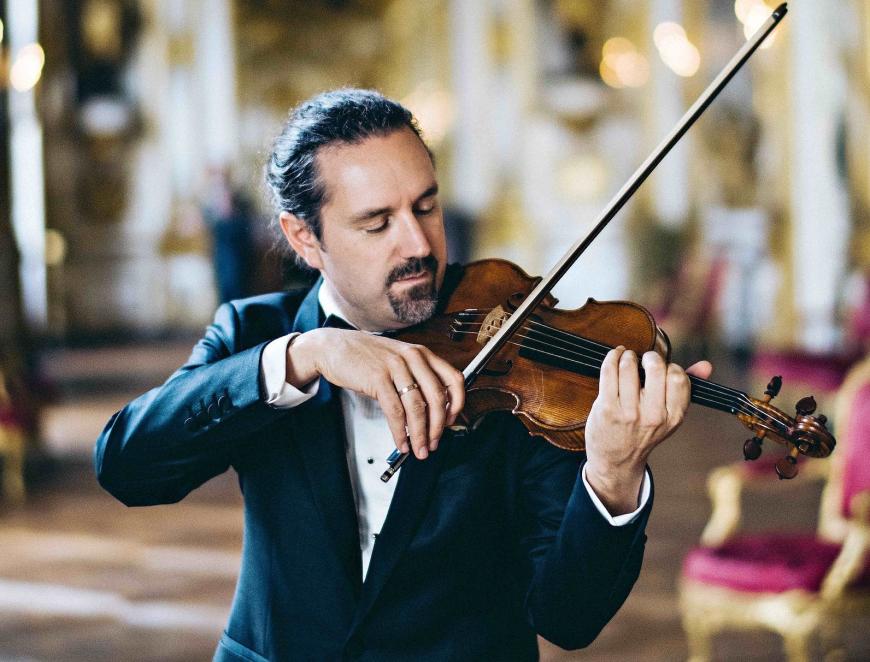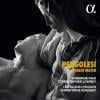
A wonderful new Alpha recording of Pergolesi’s Stabat Mater, conducted by violinist Julien Chauvin, makes clear why it was the most performed classical work in the 18th century. To encapsulate countless treatises, it’s the tunes, folks, it’s the tunes.
Originally composed for soprano, contralto, and string orchestra with organ accompaniment, Pergolesi’s Stabat Mater was constantly adapted to suit time and place. In France, where this album was recorded, Le Concert Spirituel (1725–1790) performed the work 82 times between its 1753 premiere in Paris and 1790. Rarely did it present the work in its entirety; instead, it usually offered a “greatest hits” compendium in a now-lost choral adaptation in which the initial assignment of solos to soprano and contralto varied widely, with parts sometimes sung by Italian castrati, French falsettists, tenors, and even the French equivalents of baritones and basses.
Here, Julien Chauvin opts a for a variation of the 1769 Paris version, and enlists soprano Jodie Devos, mezzo-soprano Adèle Charvet, the two-part female children’s choir Maîtrise de Radio France under Marie-Noëlle Maerten, and the period strings of Le Concert de la Loge augmented by Aurélien Delage’s harpsichord and organ. He also opts for peculiarly French Latin pronunciation that was spoken at the time of the premiere.
Perhaps it was Pergolesi’s youth — he composed his Stabat Mater shortly before he died in 1736, at the tender age of 26 — that led him to write what must be the jauntiest “Quae moerebat et dolebat” (She mourned and grieved) ever composed. The words say the Mary trembled when she experienced the torment of her son, Jesus, nailed to the cross, but the initial part of the two-minute section sounds as if mezzo-soprano Charvet is about to dance around the cross to string accompaniment. Only the copious trills produced by her gorgeous smooth voice — regrettably, there’s no excerpt of the movement from this recording currently available on YouTube, so I’ve opted for one by countertenor Philippe Jaroussky — hint at Mary’s trembling.
True, the music of some of the subsequent sections more convincingly expresses suffering and grief. Nonetheless, to cite but one further example, the string accompaniment that begins the wonderful duet “Sancta Mater, istud agas” (Holy Mother ... let the wounds of the crucified be engraved deep upon my heart) sounds more suitable for a courtly ball than a work depicting Mary’s sorrows. Compared to any of Bach’s Passions, Pergolesi’s Stabat Mater is suffering light.
The raison d’être for yet another recording of the work is immediately apparent. The musicianship is heavenly. Devos doesn’t have much color at the very bottom of her range — she’s most known for her high coloratura operatic assumptions, although her recent song recital, And Love Said, is marvelous — but she begins to shine just a few notes up. 95 percent of Devos’s range abounds in light and gravitas in equal measure, with highs bright and radiant.
Charvet is a major find: a mezzo whose expressive bottom is free of matronly plumminess, and whose top is maximally warm and smooth. The girls’ chorus is divine, and the lightness and grace of the strings all one could ask for.
Chauvin caps the recital with a symphony in the same key as the Stabat Mater, Haydn’s Symphony No. 49 in F Minor (“La passione”), H. 1/49. Le Concert Spirituel often performed Haydn’s works, and this one seemed, to Chauvin, a perfect pairing. However, his decision to replace oboes and horns with organ makes the work sound as though Haydn may have consumed a bit too much bubbly while he composed. What I do know, beyond doubt, is that the Stabat Mater performance will likely charm you no end. And, on that note, we end with a priceless Jodie Devos encore.




